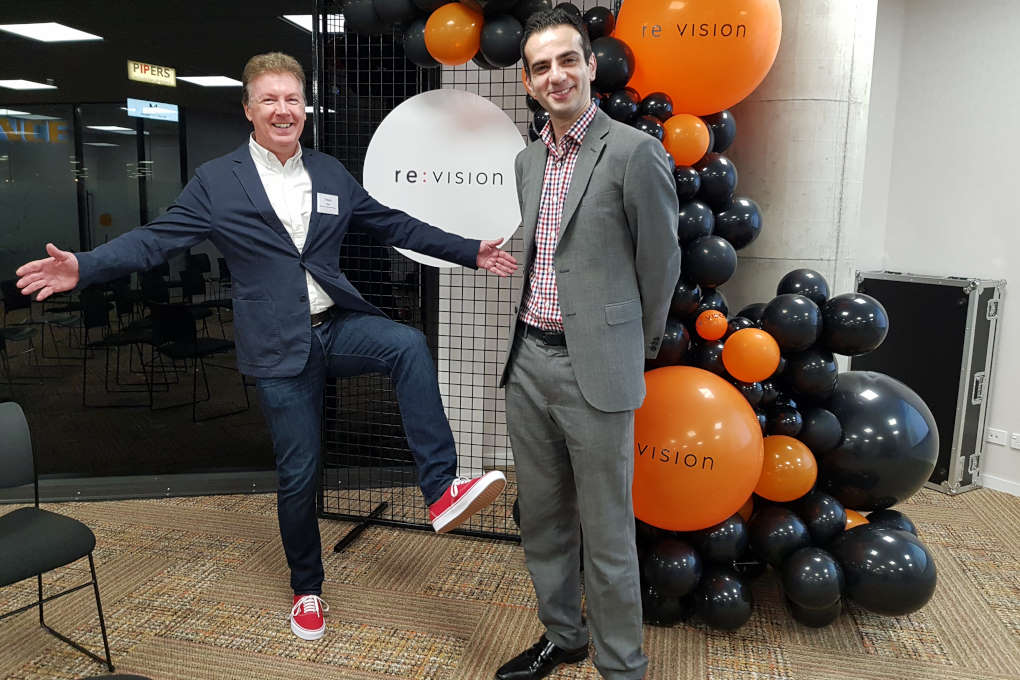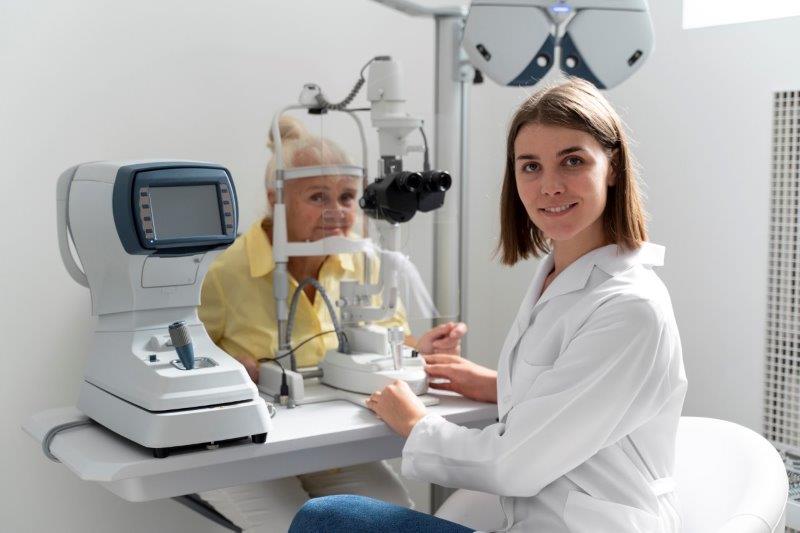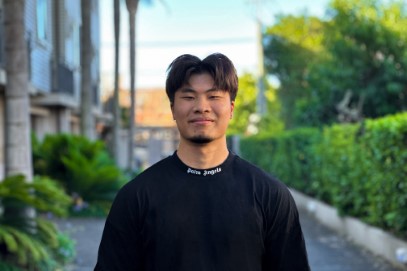Re:Vision opens its doors
Battling serious rush hour traffic in misty rain around the business park area of Auckland’s Sylvia Park is not the most endearing introduction to the Re:Vision eye surgery. However, the familiar faces of Dr Trevor Gray and his team, most of whom have worked with Trevor for the past 20 years, more than made up for my difficulties getting there to attend the new surgery's first seminar.
Trevor’s relaxed and inclusive leadership style soothed the grumpiest of traveller and it was evident that this team spirit extended to creating a relaxed atmosphere for patients as well as staff, with the whole team, including surgeons, styled as the “red shoe gang”, much to the amusement of all of the evening’s attendees and certainly a great conversation starter! Veronica Vodanovich, Re:Vision’s customer care co-ordinator happily volunteered, “It is a beautiful calming place to work in”.
Understanding Re:Vision
According to Trevor, it was not too difficult to find premises for his new venture. What attracted him to Re:Vision’s building in Mt Wellington was that it was a new build, just three floors and a roof when he discovered it. That meant the interior could be fitted-out for purpose with a floor area bigger than needed to allow room for growth. Coincidentally, it also has a unique oval shape which can be interpreted as a lens shape or eye, he said. This made for some interesting design challenges with corridors that taper so the biggest area is in the centre where there is most traffic. Rooms with floor to ceiling windows give a great view of the city lights at night and no doubt a daytime view to wow any post-surgical subjects.
So, new is the Re:Vision surgery, signage is still to be finalised, but ophthalmic technician Francis Read told me the the team is providing detailed maps for patients, who won't, like me, be arriving at night. I hope they also include details for public transport use if, as we are increasingly led to believe, that is the future of Auckland transport.
The concept of Re:Vision, according to Trevor, is centred on being a niche practice and centre of excellence for anterior segment care. Focusing on this goal, Trevor has combined his years of experience dealing with anterior segment problems with the expertise of Dr Mo Ziaei, who was raised and trained in the UK.
Dr Ziaei came to Auckland three years ago after completing his fellowship at Moorfields, where he was awarded two medals in the prestigious Royal College of Ophthalmology exams. His particular area of interest is the medical and surgical management of keratoconus. In introducing Dr Ziaei, Trevor pointed out Dr Ziaei had brought significant surgical skills in Descemet's membrane endothelial keratoplasty (DMEK) grafting to New Zealand and applied those skills to his teaching as a clinical senior lecturer at Auckland University.
Rosacea
The educational portion of the evening was predictably centred around anterior segment topics. Trevor discussed rosacea, the chronic inflammatory condition affecting the oil-secreting glands of the face and eyelids. He encouraged optometrists to recognise the four different types and classical symptoms and suggested treatment options, showing that optometrists are well equipped to manage rosacea and make a real difference to their patients’ lives, if they remember to delve deeper under the layer of cosmetics hiding the truth of the problem.
The majority of patients with rosacea (58-72%) develop ocular rosacea. Rosacea also occurs in children, with 55% of those children having ocular rosacea symptoms preceding the facial signs. Recurrent chalazion in children should trigger a thought process which includes rosacea, and children respond well to management of this condition.
Cutting-edge keratoplasty
Dr Ziaei continued the anterior segment theme with a presentation aptly titled ‘Cutting-edge keratoplasty’, dissecting out the different techniques in lamellar keratoplasty from penetrating keratoplasty.
According to Dr Ziaei, 60% of grafts in New Zealand are still penetrating keratoplasty, but this is likely to change as the studies show that deep anterior lamellar keratoplasty (DALK) tends to be biomechanically stronger with faster recovery, important in our sports-mad population and our history of poor donor availability, particularly among Mori where there is also a high incidence of keratoconus.
Dr Ziaei also outlined the advantages of femtosecond laser-assisted deep anterior lamellar keratoplasty (femto-DALK), principally customisable graft geometry and better graft-host apposition, leading to smoother graft interface and faster suture removal. His concluding comment was that the rapidly evolving field of collagen crosslinking is offering the possibility of reduced need for corneal transplantation and improved visual performance, particularly if combined with other treatments.
Managing cataract surgery risks
Recognising and managing the risk of cataract surgery in eyes that have already been subjected to refractive surgery, is a topic which has been long pondered over, especially among those of us who have been around long enough to remember the early days of refractive surgery. Trevor’s risk management outline for this group, and high myopes and diabetics, was a welcome addition to our knowledge of shared care. Patients who have previously undergone RK or lasik/PRK procedures will generally take longer for the refraction to settle post-cataract surgery and optometrists need to be aware of this and work through it with patients, he said. Certainly, there are also often issues of higher order aberrations in this group.
An eye opener for some of us, was the greater number of steroid responders amongst those myopes with increased axial length. The response rate is much quicker in high myope steroid responders but also intraocular pressure reduces quickly when the steroid is removed, reduced or changed. Post-operative management of diabetic patients includes close monitoring for diabetic macular oedema and diabetic retinopathy progression, though there is often a better view of the retinopathy once the cataract has been removed.
More than a new surgery
While the emphasis of the evening was without doubt the unveiling of the new Re:Vision facility and Trevor’s evident pride in the concept of a niche practice, the question hanging heavily in the air was, “Why?” In reply, he responded that these days medicine is a business and businesses, like people, evolve with time. With this evolution came a divergence of philosophies from his past business life, or perhaps it was a convergence insufficiency.
He modestly made no mention of the philanthropic activities of his Buchanan Charitable Foundation or his work with the Auckland Regional Charity Hospital (ARCH), a new charitable cataract service for New Zealanders who have been denied access to much-needed cataract surgery by the public system. But he did mention that Re:Vision provides pro bono laser vision correction for tetraplegic patients, something he’d initially started at Eye Institute.
On another positive note, exiting left at the conclusion of the evening was a breeze, with motorway entry just metres away and a virtually empty motorway had me whistling home in minutes.
About the author
Naomi Meltzer is an Auckland-based optometrist and low vision services consultant, and writer for NZ Optics.



























